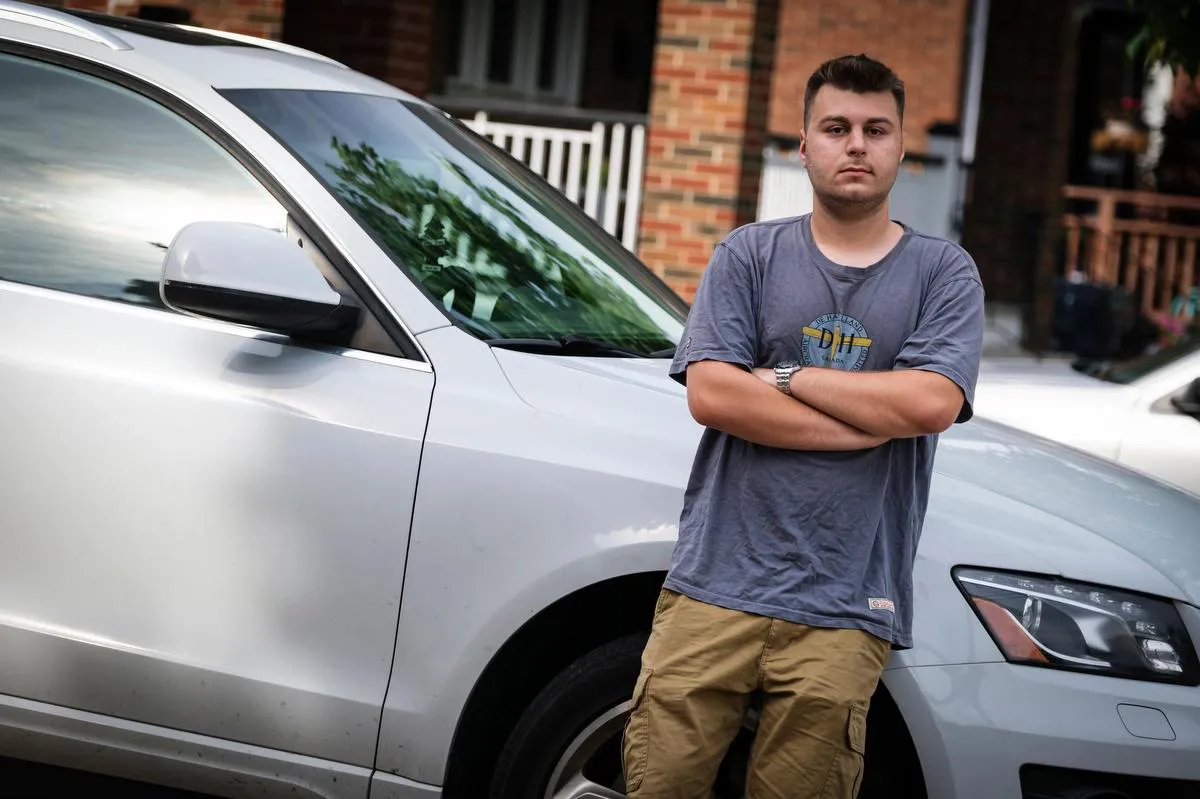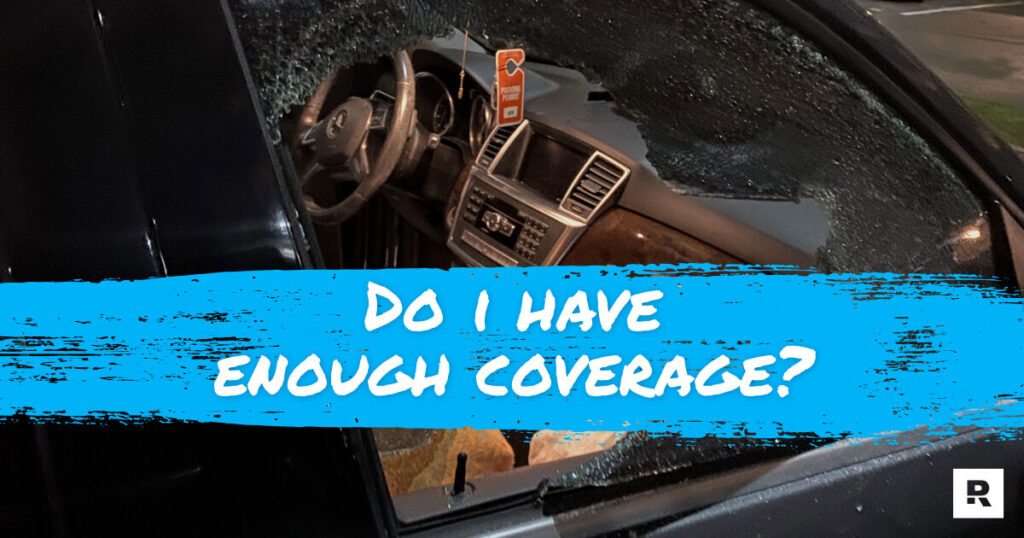Inflated car insurance premiums deflating young drivers


He’s certified to fly commercial passenger planes, but car insurance companies still consider him “high risk” simply because he’s a young driver.
Robin Somers, 20, has tried for weeks to find affordable car insurance for his 10-year-old car. His search has been futile.
Despite having been driving for four years with an unblemished record, he faces upwards of $6,000 to $8,000 a year in insurance premiums — more than half of what it cost for the used car itself.
“Having to pay this much just because I’m young, and having no control over that despite having a clean driving record, is as just sad and disheartening,” said Somers, a recent college graduate who works as a commercial airline pilot.
Young drivers under 25 pay upwards of four to five times the amount for car insurance compared to more experienced drivers. For many already straddled by student debt and the ever-increasing cost of living, the price of car insurance is yet another barrier to financial stability — and for some, it may even affect their job prospects.
As insurance premiums continue to climb, experts, novice drivers and their parents say it’s time to rein in the exorbitant prices.
“Rates have definitely continued to go up,” said Jessica Moorhouse, a millennial money expert and an accredited financial counsellor. “There should be more checks and balances because I feel like there are a lot of smoke and mirrors and secrecy about how prices are calculated.”
Car insurance premiums in Ontario are among the highest in the country. In 2020, average annual premiums in the province cost $1,655, according to the Insurance Bureau of Canada and the General Insurance Statistical Agency.
Yet prices vary widely, with some young drivers paying in excess of $10,000 for auto insurance each year.
“It’s the experience factor,” said Matt Hands, director of insurance at ratehub.ca. “With insurance, the longer you’re driving and the cleaner your history, you’re going to see the improvement in your rates, especially after you pass the age of 25.”
When Somers first purchased car insurance while a college student in Thunder Bay, he paid $3,500 to insure his first vehicle, a nearly 20-year-old car which he purchased for $800.
Since graduating and returning to the city, rates haven’t declined, despite Somers having a more extensive driving record.
“The rates are astronomically high,” said Somers, who received some insurance quotes above $11,000 for his 2012 Audi SUV. “I always knew that it was going to be expensive, but I did expect prices to drop a little bit after the first few years. But they haven’t decreased at all.”
For Somers, it’s necessary to have his own car to commute to work at Billy Bishop Toronto City Airport. His shifts often start at 5 a.m. — before public transit service begins. He’s also unable to share his mom’s car and be added as a secondary driver — which would lower insurance premiums — since she also works full-time as a nurse.
But he and his mom, Sue, have tried almost everything else: shopping around, bundling their two insurance policies, even trying to secure a discount rate through the Ontario Nurses Association.
The cheapest quote they received was $6,621 per year.
“It’s almost required to have a car (to get a job) so to put the financial burden of that much money on a young adult at this age, when we were just starting out in our careers or even still in school, is really tough,” said Somers.
“In a day and age where housing and the cost of living are also astronomical, it feels in a way that we’re being discriminated just by being young.”
Sue, a single mother who also has a 17-year-old daughter about to receive her G2 license, said the price of premiums has forced her to take out a mortgage on her house. She’ll have to support her son until he’s about 25 years old. Somers will pay back his mom after he completes his aviation training.
“My heart goes out to the youth,” said Sue Somers. “I’m really concerned about how they’re going to make it with such high expenses at such an early age.”
Though insurance premiums have actually decreased slightly over the past year, down 0.7 per cent year-over-year in June according to Statistics Canada, they had been increasing over the last couple of years due to inflation and more car theft in the GTA, said Hands.
Insurance companies calculate premiums based on historical data. Young drivers are more likely to be involved in an accident compared to more experienced ones, thus the higher rates. While only 13 per cent of licensed drivers were aged 16-24, they represent 24 per cent of fatalities and 26 per cent of those seriously injured, according to a Transport Canada report from 2004.
Statistics also show men are more likely to be involved in auto incidents compared to women. In the U.S., 71 per cent of all motor vehicle crash deaths were males in 2018, according to the department of transportation.
According to data from ratehub.ca, 17-year-old male drivers pay about $2,000 more on insurance compared to females of the same age. Those premium differentials begin to narrow as drivers become more experienced, Hands said.
Kelsey Hawke, a RATESDOTCA expert and licensed insurance broker, said bundling home and auto insurance policies may reduce prices. She also recommends young drivers secure an insurance policy as soon as they receive their license.
“Earning insurance experience will help to bring their premiums down year-over-year,” she said.
Hands added young drivers should complete their graduated licensing program and obtain their full G license as quickly as possible to lower insurance costs. “You’re showing your provider that you’re passing the different stages quickly and you’re proving that you deserve to have a license and that you’re a quality driver,” he said.
Hands also highlighted telematics insurance programs, which track users’ driving behaviours in real-time. Those programs could save drivers up to 15 to 20 per cent per year if they demonstrate strong habits, said Hands.
But considering the price of auto insurance today, plus fuel and car maintenance costs, Moorhouse said it may be cheaper for some young drivers to rent a car or use a car-sharing program, depending on how often they drive.
On top of student loans, rent and other living expenses, “trying to find another six to eight thousand to pay for just the insurance, not including like the actual car and gas, could be just like one thing they can’t deal with,” she said.
Joshua Chong is a Toronto-based staff reporter for the Star. Reach Joshua via email: [email protected]
This content was originally published here.




Responses